Interview With Barb Page Part 4 Peavey EVH Wolfgang Guitar
Greg: When the relationship with Music Man ended, were there any other guitar companies besides Peavey that you spoke with?
Barb: No. The first time we met with Hartley he wanted to manufacture both Edwards guitars and amps. Peavey had been making guitars since the late 70’s and during that time was one of the largest guitar producers in the country. We were aware of Peavey’s innovative contributions to guitar manufacturing and we had no doubt that they could make a high quality guitar, but at the time we thought it would be best just to have them build the amps and to have Music Man build the guitars. We were teaming up with the underdog so to speak with the amplifier and didn’t want to put all of our eggs in one basket since it was a new relationship.
Greg: How soon after the Music Man relationship ended did you contact Peavey?
Barb: Right away. Edward was on tour and he was still playing his Music Man guitar on some songs. We decided to put black tape over the Music Man logo for the time being until he had a Wolfgang guitar so he needed a signature guitar to play sooner than later (laughs).
I called Hartley to talk about the possibility of Peavey building Edwards guitars since we had complete confidence in Peavey since the 5150 amp was so well received. Edward had just designed his guitar with Music Man so we thought he would most likely keep the design specs similar to that guitar and it seemed like it would be a fairly quick straight forward project. But that wasn’t the case and the Wolfgang guitar ended up being quite different from the Music Man and took about ten months to complete.
Greg: Hartley must have been thrilled over the prospect of making Ed’s guitars.
Barb: He really was and soon after we spoke he flew us out to Mississippi for a tour of the guitar factory. Hartley and Melia walked us through the entire factory and showed us the manufacturing process.
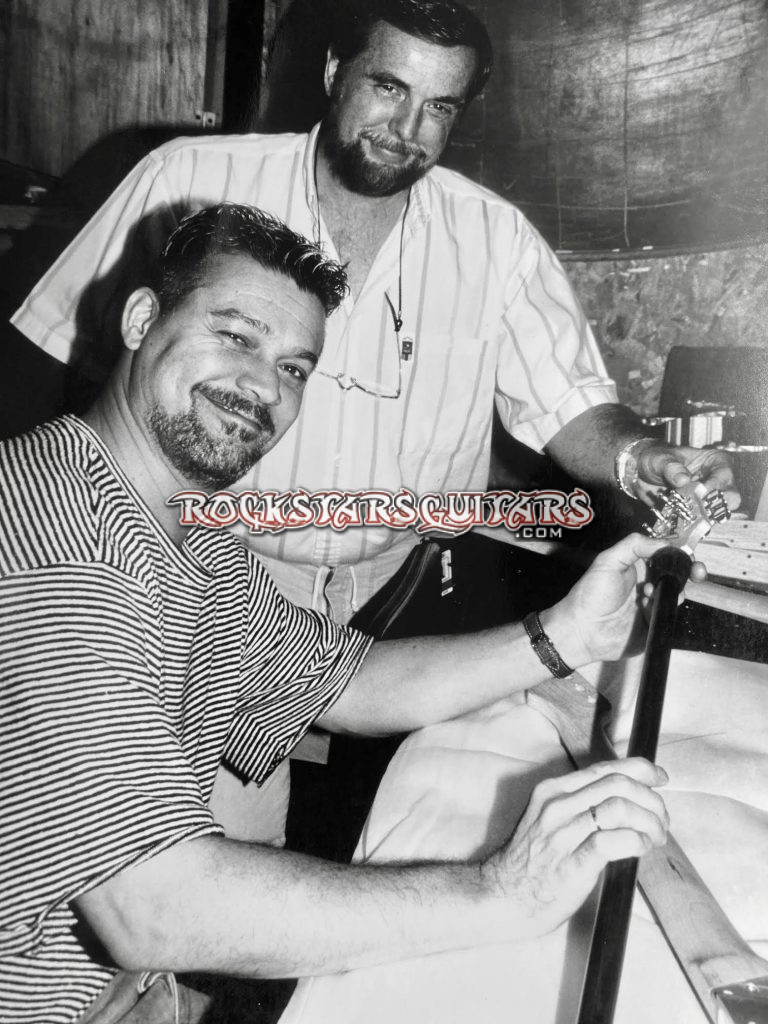
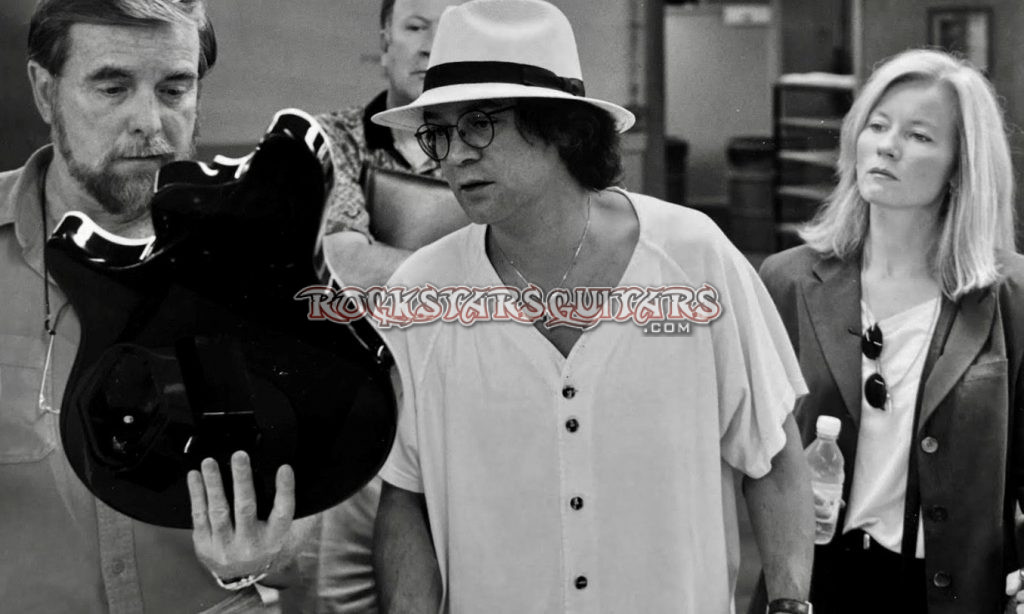
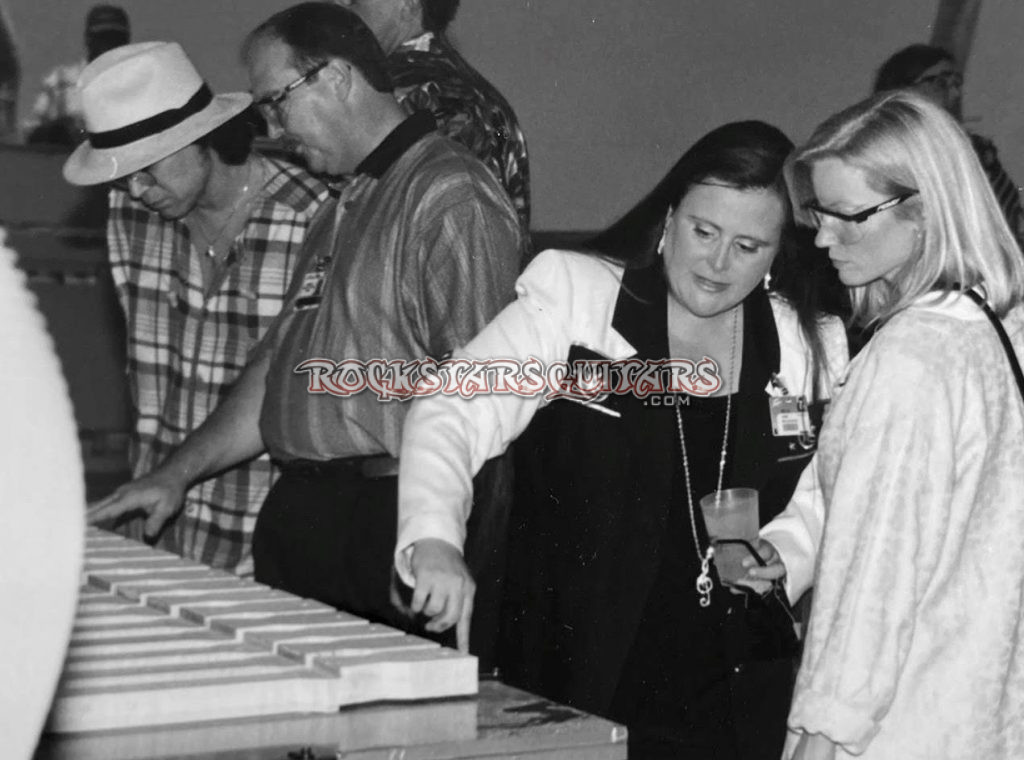
It was very obvious to us that they would have no problem manufacturing Edwards guitars and so we decided to move forward with them.
Greg: How does everybody decide who does what? Do you work as a team or do you have individual tasks?
Barb: Initially we have individual tasks and then we come together and discuss and fine tune everything as a team but Edward has final approval on everything. Hartley and Melia would start on a marketing and manufacturing plan and Edward would start working with the guitar team on a prototype and I would work with the legal and advertising departments. I also needed to find some artwork that Edward would like for the headstock.
Greg: Finding artwork for somebody sounds challenging since you could go in a million different directions. How were you able to accomplish that?
Barb: I needed to find an artist who was really talented and experienced since this trademark would identify Edward and his products for decades to come. There was so much to consider when designing this logo because not only do you have a very small area to display the logo on, it also had to compliment and blend harmoniously with the block style Peavey logo.
I decided to contact the Pasadena Art Center College of Design and met with a professor who taught graphic design and thankfully she agreed to design the logo. I gave her two wooden cut out reference samples of the headstock
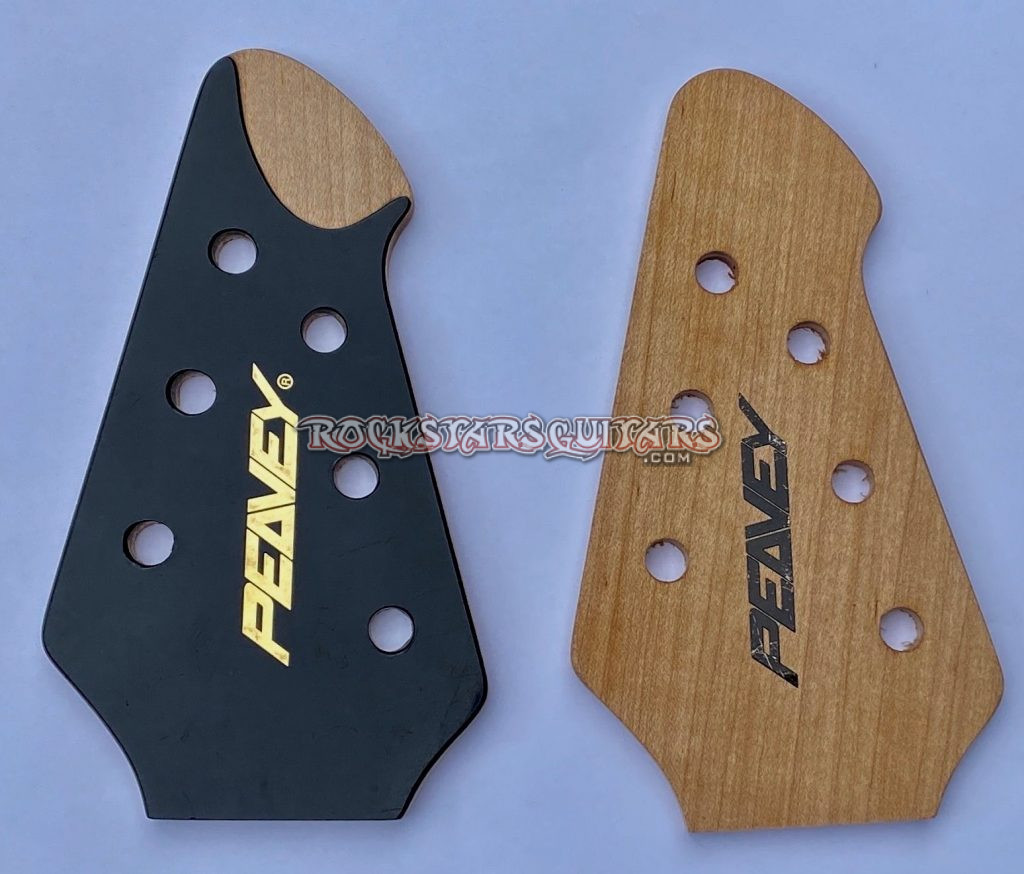
and told her that the guitar would be called the “Wolfgang”. I also asked her to design the “EVH” logo since we might come out with guitar strings and other accessories and could use that logo on the artwork. I showed Edward several variations of the logo design that I thought he might like and he said that he was having a tough time deciding on the headstock logo because he liked them all. That was such a relief. (laughs).
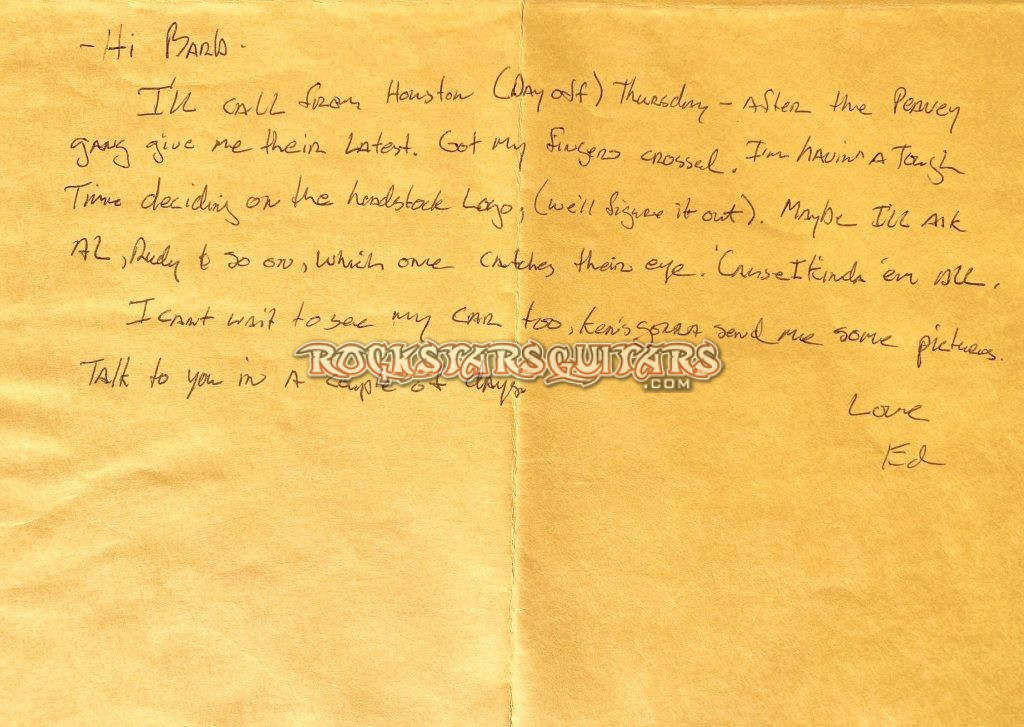
Greg: The Peavey EVH Wolfgang guitar was a huge success so Hartley and Ed must have made some really good decisions every step of the way.
Barb: Yes and that really does need to happen in order to have a successful product. Hartley had ideas of how to advertise and market the guitar worldwide and he wanted the guitar to have a really strong impact in the guitar market. He coordinated everything from the timing of the press release to the magazine advertising lead times to the guitar release date and he anticipated a high demand for the guitar and was prepared for production. There were a lot of moving parts and he coordinated everything beautifully and his decades of experience were front and center.
Edward was really focused on getting the pickups to sound the way that he wanted them to and he even asked for a guitar with more wood routed out so he could position the pickups himself. He decided on all the aesthetics from the logo to the binding to the colors of the body and of the headstock in addition to approving all of the woods and hardware for the guitar. And it was very helpful that he had complete confidence in master builder Jim De Cola.
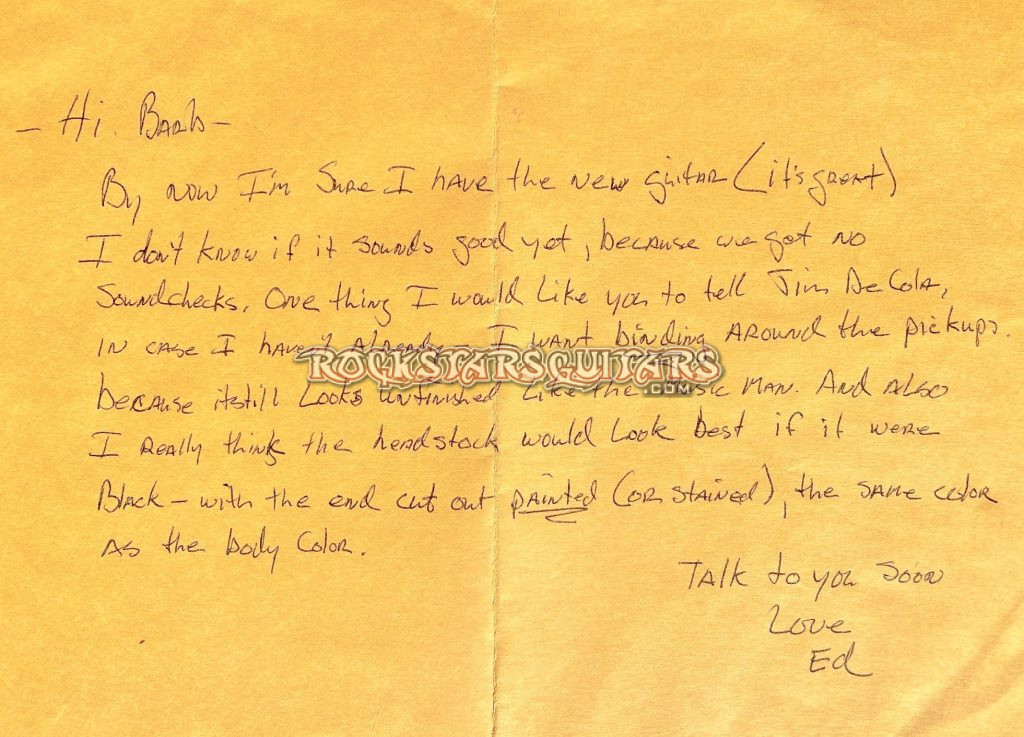
So with both Hartley and Edward being 100% hands-on and dedicated to this guitar project the end result could be nothing short of a success. These two guys were both at the top of their game and together they really were a dream team.
Greg: When and where was the guitar first introduced?
Barb: It debuted at the January 1996 NAMM convention center in Anaheim. Every year we would go to the NAMM show the night before it was open to the public to look at his display booth and to see where he would demonstrate his equipment. We would arrive around midnight so that he could have his privacy and we were literally the only two people there besides the security staff. We would walk around the convention center for hours and since he had a NAMM Exhibitor card we had access to the entire place.
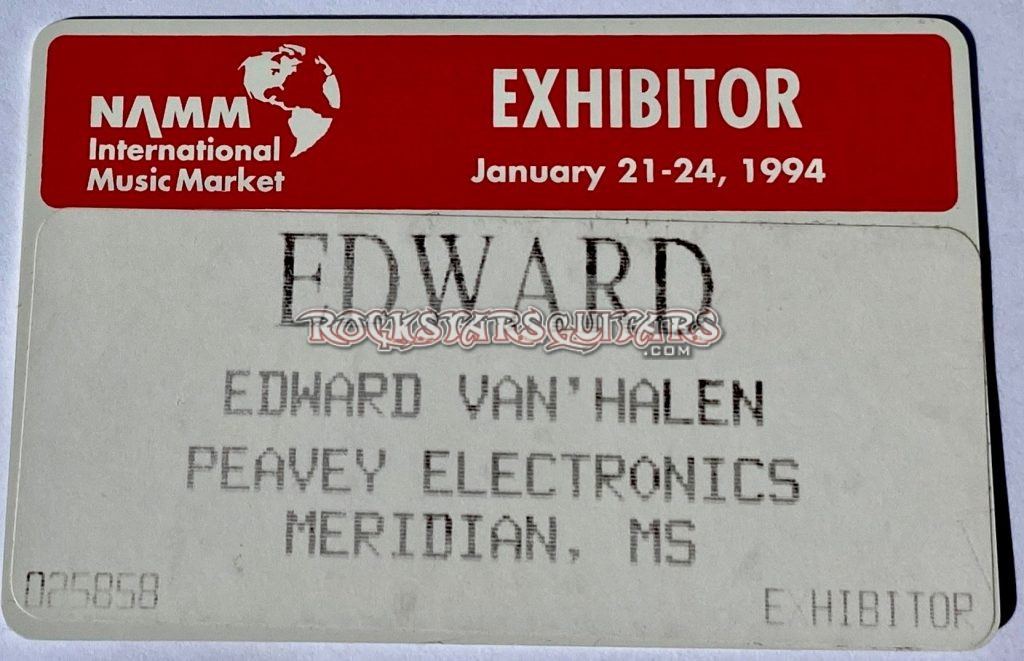
The January 1996 NAMM turnout at the Peavey booth was impressive. We were sitting upstairs in a room above the Peavey booth waiting for the scheduled time slot when he was to demonstrate the Wolfgang guitar. We looked out the window and saw a very large number of people gathered closely together around the Peavey booth and it seemed like we might be witnessing a bit of history in the making. Peavey had never had a turnout like this before and went from underdog to top dog overnight. Hartley and Melia deserved this recognition for all of the dedication and hard work that they put towards Edwards products.
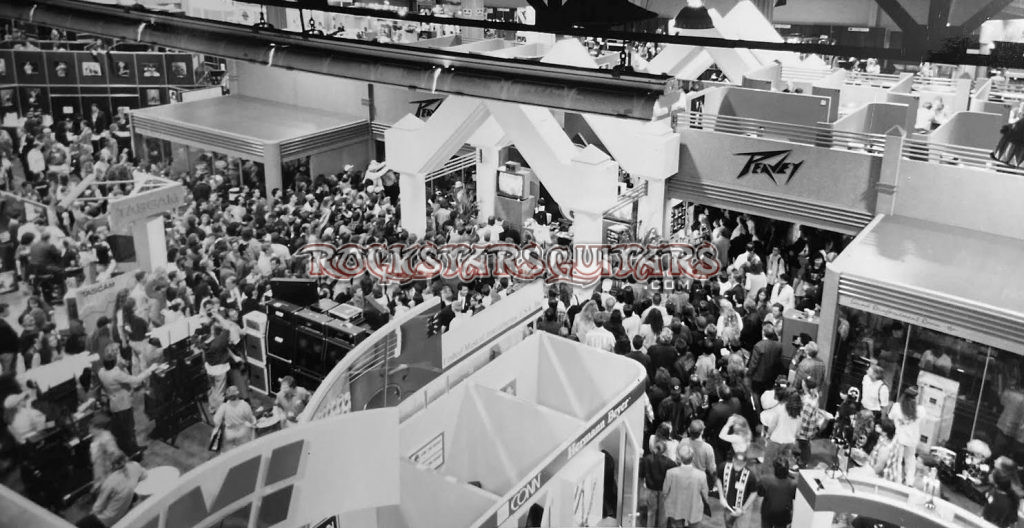
Greg: Ed came out with the EVH Wolfgang Special guitar in 1998 and it won a lot of awards and it seemed that the relationship was going strong. Why did Ed part ways with Peavey in 2004?
Barb: So many things took a turn for the worst beginning in 1998. Melia Peavey passed away unexpectedly in 1998 and this was a tragic loss for Hartley. Then during the next few years Edward was dealing with health, marital and band issues and there was a communication breakdown between him and the guitar and amp techs at Peavey so he decided to end the relationship. We were very proud of all the accomplishments we made with Peavey and the collaboration and partnership of 13 years was nothing short of victorious.

